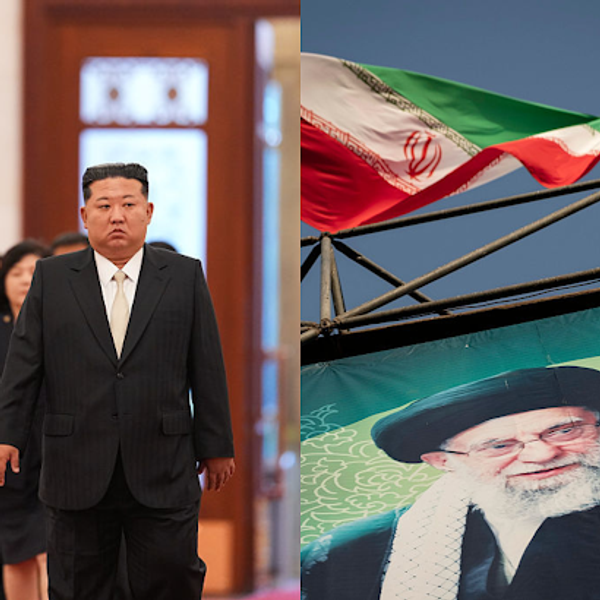Bottom Line Up Front
- Iran is continuing its efforts to strengthen its influence in Iraq and drive U.S. military personnel out.
- Iran’s struggles with the COVID-19 pandemic have not diminished its activities in Iraq.
- Iran’s strategy involves backing armed attacks on Iraqi bases as well as leveraging its allies in Iraq’s governmental structure.
- There is potential for the United States and Iran to come into conflict in Iraq again.
Despite the COVID-19 pandemic that has consumed the attention of both Iran and the United States, as well as that of Iraq, Iran has continued to try to ensure that it maintains preponderant influence in Iraq. Iran views U.S. forces in Iraq as the spearhead of U.S. influence there, as well as a national security threat to Iran itself. That threat perception has seized Tehran since the January 3, 2020 U.S. killing of Islamic Revolutionary Guard Corps – Qods Force (IRGC-QF) commander Qasem Soleimani in Baghdad. The COVID-19 crisis, which has affected Iran more than any other Middle Eastern country, apparently caused Iran to curtail its strategic drive in Iraq for several weeks. But the distraction - and the impediments of travel restrictions between Iran and Iraq imposed by Iraq’s government - proved only temporary, and Iran has now reactivated all the components of its Iraq strategy.
Iran resumed its campaign in Iraq in early March with a visit there by the Secretary-General of Iran’s Supreme National Security Council Ali Shamkhani, a high-ranking IRGC commander and former Defense Minister. The Shamkhani trip during March 6-7 was the highest-level IRGC visit to Iraq since the Soleimani killing. On March 11, a rocket attack on Camp Taji killed two U.S soldiers and one British medic, and a renewed cycle of conflict appeared imminent when the United States retaliated by striking several ammunition sites controlled by the Iranian proxy Kata’ib Hezbollah (KAH) Shia militia. Yet, undeterred by the U.S. strike, a few days later, Shia militia forces attacked another Iraqi facility used by U.S. military personnel, at Bismaya, although without causing any casualties. A previously unknown group, calling itself Usbat al-Thayireen (League of Revolutionaries) claimed responsibility for the Taji and Bismaya attacks, suggesting that the IRGC-QF had assembled its proxy militias into a new coalition. Usbat subsequently issued new threats against U.S. troops, showing video evidence that it has U.S.-inhabited facilities under constant surveillance.
The military component of Iran’s strategy appears to be having some success. Since February 2020, U.S. forces have been consolidating into the larger bases in Iraq, which are defended by missile and rocket defenses, and returning the smaller, outlying, bases to Iraqi control. Some of the 5,200 U.S. forces have even been withdrawn to Kuwait and elsewhere. In response to indications that Iran-backed forces are planning further attacks in Iraq, in early April President Trump warned Iran of retaliation were any such new attacks to proceed. At the same time, many experts assessed that the Trump administration would be reluctant to engage in another cycle of hostilities with Iran while dealing with the COVID-19 pandemic that is peaking in several cities.
Iran also accelerated the parallel track of its strategy – attempting to control Iraq’s political structure. Soleimani’s successor, Esmail Qaani, arrived in Baghdad on March 30 to rally pro-Iranian Shia political factions to block the parliamentary confirmation of Adnan al-Zurfi as Iraq’s new Prime Minister. Zurfi was nominated by pro-American president Barham Salih, a Kurd, on March 17, giving him until approximately April 15 to achieve confirmation of a new government. Although he is a Shia, Zurfi is viewed with suspicion by Tehran for voting against the resolution to expel U.S. forces from Iraq in the wake of the Soleimani killing. Qaani obtained commitments to oppose Zurfi from at least two major pro-Iranian parliamentary blocs, including the faction led by Tehran’s ally, former Prime Minister Nuri al-Maliki. As the deadline to form a government approaches, Zurfi has sought to burnish his image in Iran by calling for the lifting of sanctions on Iran and praising Iraq’s Shia militias. However, he does not appear to be able to overcome Tehran’s perception that he is ‘pro-American.’ It is likely that Iran’s efforts to sabotage his nomination will succeed – particularly in light of the U.S. troop reduction and the sense that U.S. influence in Iraq is waning. Finding a prime minister who can satisfy both Iran and the United States is not an easy task, and it remains unclear who in Iraq might yet emerge as a consensus candidate.








